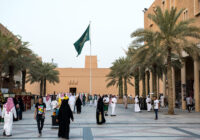Personality and the conflation of national interests with personal ambition are contributing to the widening gap between Saudi Arabia and the United Arab Emirates. It was only a matter of time before Saudi Crown Prince Mohammed bin Salman (MBS) would want to go out on his own and no longer be seen as the protégé of his erstwhile mentor and Emirati counterpart, Abu Dhabi Crown Prince Mohammed bin Zayed (MBZ). By the same token, there was little doubt that the Saudi prince and future king would want to put to rest any suggestion that the UAE, rather than Saudi Arabia, called the shots in the Gulf and the Middle East.
No doubt, MBS will not have forgotten revelations about Emirati attitudes toward Saudi Arabia and the UAE’s strategic vision of the relationship between the two countries. This was spelled out in emails by Yusuf al-Otaiba, the UAE ambassador in Washington and a close associate of MBZ, which were leaked in 2017. The emails made clear that UAE leaders believed they could use Saudi Arabia — the Gulf’s behemoth — and Mohammed bin Salman as a vehicle to promote Emirati interests.
Sultans of the Gulf (Podcast)
“Our relationship with them is based on strategic depth, shared interests, and most importantly the hope that we could influence them. Not the other way around,” Otaiba wrote. In a separate email, the ambassador told a former US official that “I think in the long term we might be a good influence on KSA [Kingdom of Saudi Arabia], at least with certain people there.”
A participant in a more recent meeting with Otaiba quoted the ambassador as referring to the Middle East as “the UAE region,” suggesting an enhanced Emirati regional influence. In a similar vein, former Dubai police chief Dhahi Khalfan, blowing his ultra-nationalist horn, tweeted in Arabic, “It’s not humanity’s survival of the strongest, it’s the survival of the smartest.”
To be sure, Mohammed bin Zayed has been plotting the UAE’s positioning as a regional economic and geopolitical powerhouse for far longer than his Saudi counterpart. It is not for nothing that it earned the UAE the epitaph of “Little Sparta,” in the words of former US Secretary of Defense Jim Mattis.
Windows of Opportunity
No doubt, smarts count for a lot. But, in the ultimate analysis, the two crown princes appear to be exploiting windows of opportunity that exist as long as their most powerful rivals, Turkey and Iran, fail to get their act together. The Saudis and Emiratis see the Turks and Iranians as threats to their regional power. Both Turkey and Iran have far larger, highly educated populations, huge domestic markets, battle-hardened militaries, significant natural resources and industrial bases.
In the meantime, separating the wheat from the chaff in the Gulf spat may be easier said than done. Bader al-Saif, a Gulf analyst, notes that differences among Arab states have emerged as a result of regime survival strategies that are driven by the need to gear up for a post-oil era. The emergence of a more competitive landscape need not be all negative. Saif warns, however, that “left unchecked … differences could snowball and negatively impact the neighborhood.
Several factors complicate the management of these differences. For one, the Vision 2030 plan for weening Saudi Arabia off its dependence on the export of fossil fuel differs little from the perspective put forward by the UAE and Qatar, two countries that have a substantial head start.
Saudi Arabia sought to declare an initial success in the expanded rivalry by revealing last week that the International Air Transport Association (IATA), the airline industry body, had opened its regional headquarters in Riyadh. IATA denied that the Saudi office would have regional responsibility. The announcement came on the heels of the disclosure of Saudi plans to create a new airline to compete with Emirates and Qatar Airways.
Further complicating the management of differences is the fact that Saudi Arabia and the UAE are likely to compete for market share as they seek to maximize their oil export revenues in the short and medium term. This is particularly before oil demand potentially plateaus and then declines in the 2030s.
Finally, and perhaps most importantly, economic diversification and social liberalization are tied up with the competing geopolitical ambitions of the two princes in positioning their countries as the regional leader. Otaiba signaled MBZ’s ambition in 2017 in an email exchange with Elliot Abram, a neoconservative former US official. “Jeez, the new hegemon! Emirati imperialism! Well, if the US won’t do it, someone has to hold things together for a while,” Abrams wrote to the ambassador, referring to the UAE’s growing regional role. “Yes, how dare we! In all honesty, there was not much of a choice. We stepped up only after your country chose to step down,” Otaiba replied.
The Muslim Brotherhood and Hamas
Differences in the ideological and geopolitical thinking of the princes when it comes to political Islam and the Muslim Brotherhood reemerged recently. Differing Saudi and Emirati approaches were initially evident in 2015 when King Salman and his son began their reign in Saudi Arabia. This was a period when Mohammed bin Zayed, who views political Islam and the Brotherhood as an existential threat, had yet to forge close ties to the new Saudi leadership. At the time, Saudi Foreign Minister Saud al-Faisal, barely a month after King Salman’s ascendancy, told an interviewer that “there is no problem between the kingdom” and the Brotherhood.
Just a month later, the Muslim World League, a body established by Saudi Arabia in the 1960s to propagate religious ultra-conservatism and long dominated by the Muslim Brotherhood, organized a conference in a building in Mecca that had not been used since the banning of the brothers. The Qataris, who have a history of close ties to the Brotherhood, were invited.
After King Salman and his son came to power, Saudi Arabia adopted a harder approach toward Brotherhood-related groups as Mohammed bin Zayed gained influence in Saudi affairs. The Muslim League has since become Mohammed bin Salman’s main vehicle for promoting his call for religious tolerance and inter-faith dialogue. Saudi Arabia and the UAE are portraying themselves as icons of a socially moderate form of Islam that, nonetheless, endorses autocratic rule.
Last week, the kingdom signaled a potential change in its attitude toward Brotherhood-related groups with the broadcast of an interview with Khaled Meshaal, the Qatar-based head of the political arm of Hamas. The interview was aired on Al Arabiya, the Saudi state-controlled news channel. Hamas, the Palestinian Islamist group that controls Gaza, maintains relations with Iran and is viewed as being part of a Brotherhood network. Meshaal called for a resumption of relations between Saudi Arabia and the Palestinian movement.
In 2014, Saudi Arabia designated Hamas as a terrorist organization. This was part of a dispute between Qatar, a supporter of Hamas and the Muslim Brotherhood, and Saudi Arabia, the UAE and Bahrain, which had all withdrawn their ambassadors from Doha. The Saudis were particularly upset by the close relations that Hamas had forged with Iran and Turkey, Riyadh’s main rivals for regional hegemony.
A litmus test of the degree of change in Saudi Arabia’s attitude will be whether it releases scores of Hamas members. These members were arrested in 2019 as part of Saudi efforts to garner Palestinian support for then-US President Donald Trump’s controversial peace plan for the Israeli-Palestinian conflict. Quoting the Arabic service of Turkey’s state-run Anadolu news agency, Al-Monitor reported that Al Arabiya had refrained from broadcasting a segment of the interview in which Meshaal called for the release of the detainees.
Despite Differences
The Saudi–UAE rivalry and the ambitions of their leaders make it unlikely that Mohammed bin Salman and Mohammed bin Zayed will look at structural ways of managing differences. This includes areas like greater regional economic integration through arrangements for trade and investment and an expanded customs union. The latter would make the region more attractive to foreign investors and improve the Gulf states’ bargaining power.
In the absence of strengthening institutions, the bets are on the crown princes recognizing that, despite their differences, “it doesn’t make sense for either one of them to let go of the other.”
The views expressed in this article are the author’s own and do not necessarily reflect Fair Observer’s editorial policy.
Support Fair Observer
We rely on your support for our independence, diversity and quality.
For more than 10 years, Fair Observer has been free, fair and independent. No billionaire owns us, no advertisers control us. We are a reader-supported nonprofit. Unlike many other publications, we keep our content free for readers regardless of where they live or whether they can afford to pay. We have no paywalls and no ads.
In the post-truth era of fake news, echo chambers and filter bubbles, we publish a plurality of perspectives from around the world. Anyone can publish with us, but everyone goes through a rigorous editorial process. So, you get fact-checked, well-reasoned content instead of noise.
We publish 2,500+ voices from 90+ countries. We also conduct education and training programs
on subjects ranging from digital media and journalism to writing and critical thinking. This
doesn’t come cheap. Servers, editors, trainers and web developers cost
money.
Please consider supporting us on a regular basis as a recurring donor or a
sustaining member.
Will you support FO’s journalism?
We rely on your support for our independence, diversity and quality.






